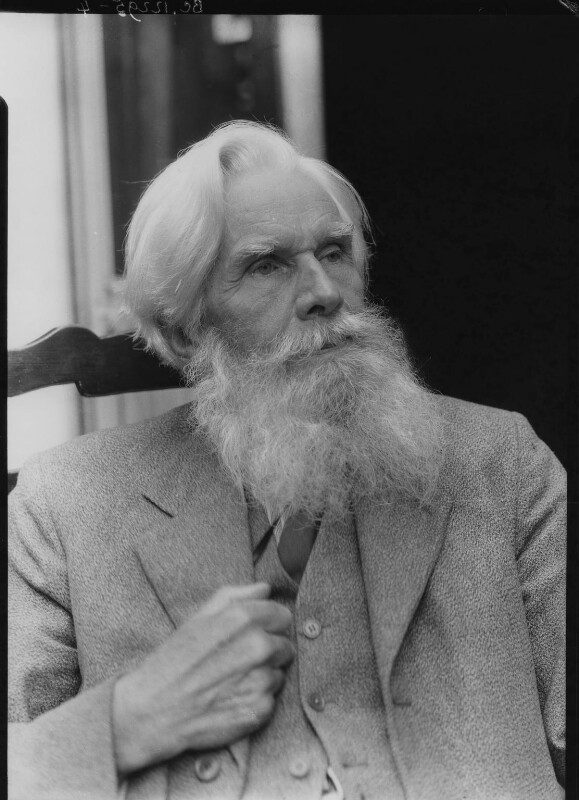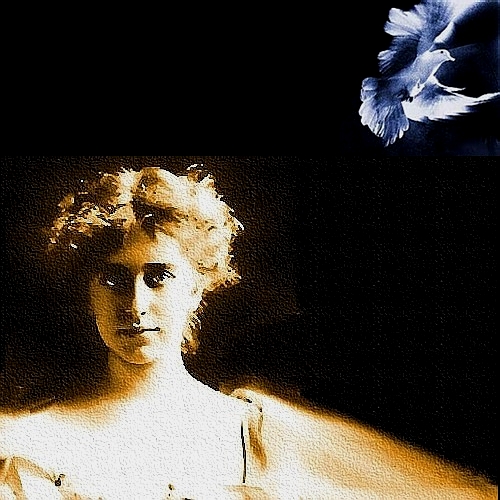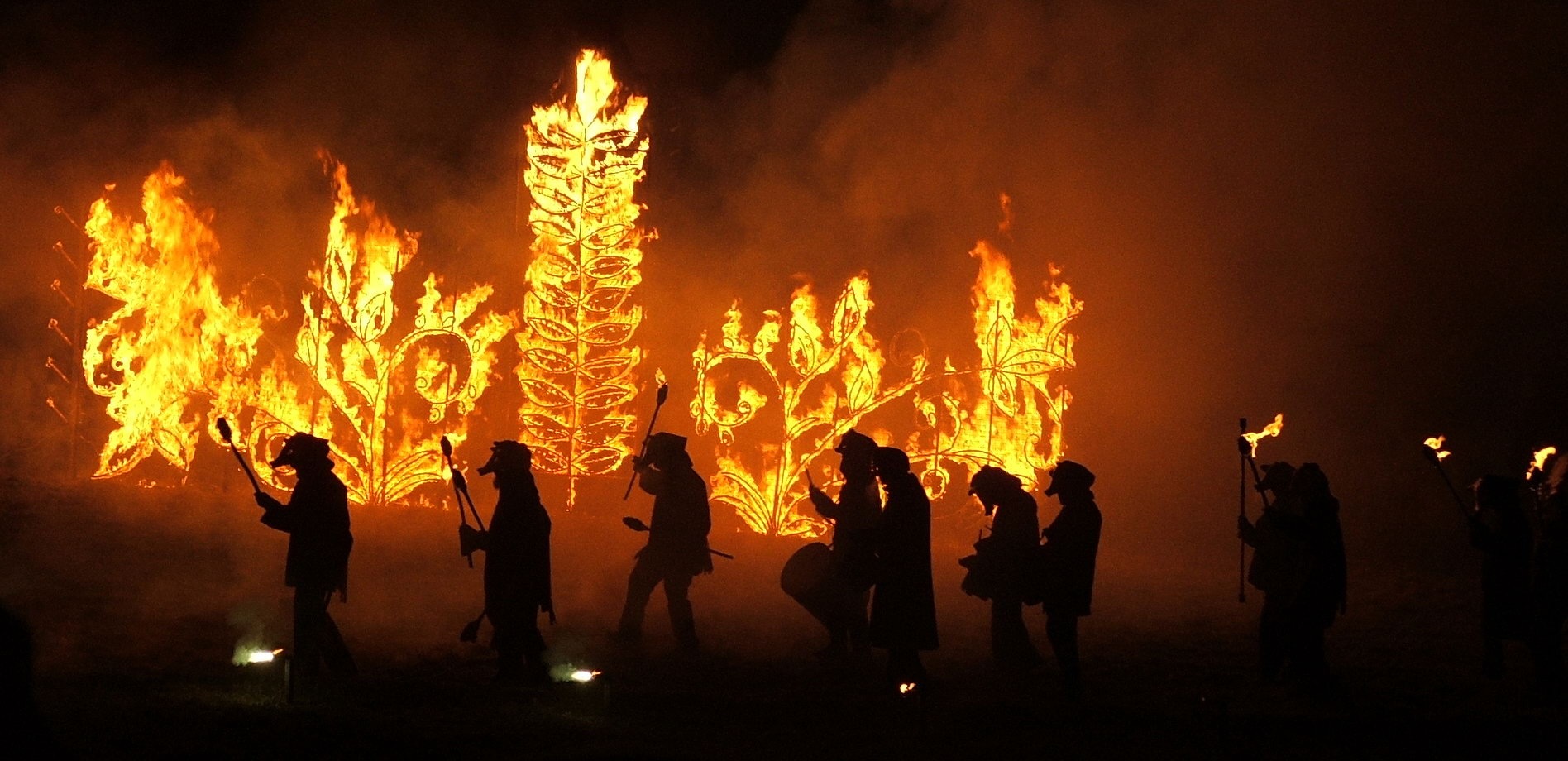|
Gay Wisdom for Daily Living brought to you by White Crane Institute ͏ ͏ ͏ ͏ ͏ ͏ ͏ ͏ ͏ ͏ ͏ ͏ ͏ ͏ ͏ ͏ ͏ ͏ ͏ ͏ ͏ ͏ ͏ ͏ ͏ ͏ ͏ ͏ ͏ ͏ ͏ ͏ ͏ ͏ ͏ ͏ ͏ ͏ ͏ ͏ ͏ ͏ ͏ ͏ ͏ ͏ ͏ ͏ ͏ ͏ ͏ ͏ ͏ ͏ ͏ ͏ ͏ ͏ ͏ ͏ ͏ ͏ ͏ ͏ ͏ ͏ ͏ ͏ ͏ ͏ ͏ ͏ ͏ ͏ ͏ ͏ ͏ ͏ ͏ ͏ ͏ ͏ ͏ ͏ ͏ ͏ ͏ ͏ ͏ ͏ ͏ ͏ ͏ ͏ ͏ ͏ ͏ ͏ ͏ ͏ ͏ ͏ ͏ ͏ ͏ ͏ ͏ ͏ ͏ ͏ ͏ ͏ ͏ ͏ ͏ ͏ ͏ ͏ ͏ ͏ ͏ ͏ ͏ ͏ ͏ ͏ ͏ ͏ ͏ ͏ ͏ ͏ ͏
|
|
||||
| This Day in Gay History | ||||
February 02Born 1711 - PRINCE WENZEL ANTON VON KAUNITZ, Austrian diplomat born (d. 1794); The great Austrian statesman, who single-handedly engineered an alliance between two traditional enemies, Austria and France, was also a bonafide pluperfect eccentric. An arrogant and conceited fop who never tired of talking or of delivering interminable moral sermons (he once chewed Frederick the Great’s ear for over two hours, having exacted from the Prussian king a promise that he not be interrupted), he was one of the great hypochondriacs of all time, refusing ever to allow fresh air within any of his homes and placing a handkerchief over his mouth whenever venturing without. Given his extreme aversion to anything physical and his horror of natural body functions, it is hard to believe that he fathered four sons, no less that he was interested in schtupping boys, as contemporary rumors had it. 1859 - HAVELOCK ELLIS, British psychologist and sexologist, born (d. 1913); Ellis’s monumental seven-volume Studies in the Psychology of Sex (1897-1928) was not only of the greatest importance in changing Western attitude toward sex, but has influenced almost all writers ever since. Given the nature of his major interest, he was more than entitled to a full-fledged fetish all his own. From the beginning, his marriage was unconventional (Edith Ellis was openly Lesbian), and at the end of the honeymoon, Ellis went back to his bachelor rooms in Paddington, while she lived at Fellowship House. Their "open marriage" was the central subject in Ellis's autobiography, My Life. According to Ellis in My Life, his friends were much amused at his being considered an expert on sex considering the fact that he suffered from impotence until the age of sixty, when he discovered that he was able to become aroused by the sight of a woman urinating. Ellis named the interest in urination "Undinism" but it is now more commonly called Urolagnia. Ellis’s Sexual Inversion, the first English medical text book on homosexuality, co-authored with John Addington Symonds, described the sexual relations of homosexual men and boys, something that Ellis did not consider to be a disease, immoral, or a crime. The work assumes that same-sex love transcends age as well as gender taboos, as seven of the twenty one examples are of inter-generational relationships. A bookseller was prosecuted in 1897 for stocking it. Although the term itself is attributed to Ellis, he writes in 1897, “‘Homosexual’ is a barbarously hybrid word, and I claim no responsibility for it.” Other psychologically important concepts developed by Ellis include autoeroticism and narcissism, both of which were later taken on by Sigmund Freud. 1923 - LIZ SMITH, American gossip columnist, born; Smith married her high school sweetheart, Scottie Vaccaro -- a World War II pilot -- in 1944, but she left him after one year to enroll in college. She graduated from the University of Texas in 1949, then moved to New York where she worked as a typist, a proofreader and a reporter before she broke into the media world as a news producer for Mike Wallace at CBS Radio. In the late 1950's Smith worked as a ghostwriter for the hugely popular Cholly Knickerbocker gossip column that appeared in the Hearst newspapers. After leaving that column in the early 1960's she went to work for Helen Gurley Brown as the entertainment editor for the American version of Cosmopolitan magazine later working simultaneously as Sports Illustrated entertainment editor as well. Twice-divorced, she acknowledged her sexuality only recently. Smith was the quintessential gossip columnist of the old school She often asserted that she liked celebrities and it showed in her writing about them. She is largely if not solely responsible for the ascendency into celebrity of Donald Trump. As Ivana Trump’s confidante, Ms. Smith channeled details of the Trump divorce that filled not just the tabloids, but also the networks and the covers of Time and Newsweek. As the former gossip columnist Jeannette Walls noted in her 2000 book "Dish: How Gossip Became the News and the News Became Just Another Show": “A lot happened in the world that week. The Berlin Wall was toppled and Germany was reunited. Drexel Burnham Lambert, the wildly powerful junk bond company that spearheaded the 1980s financial boom, collapsed. And after 27 years in prison, South African civil rights leader Nelson Mandela was freed. But for 11 straight days, the front pages of the tabs were devoted to the Trump Divorce.” For months, Ms. Smith wrote about nothing else, often on the tabloid’s front page, and even appeared there in a photo, ushering Ivana Trump past a horde of journalists and gapers in front of the restaurant La Grenouille. She repeated her stories or added new ones on the 5 o’clock news. At the time, Alexander Cockburn in The Nation called the story “Manhattan’s answer to Götterdämmerung” and wrote that “its Wagner is Liz Smith.” If her universe was one in which the Trumps and Marla Maples were the brightest stars, she was the one handing out the glow. “I just tried to be fair, and most of these other columnists weren’t,” she said of her rivals. “I like to think I was better than them. I’m probably miscalculating.” Smith lived alone in an apartment in Manhattan's Murray Hill neighborhood. She was a good friend of former Texas Governor Ann Richards, and helped her to acculturate to New York City society after Richards left Texas. There were rumors of a romance. She died in 2017 at the age of 94 and is survived by her long-time lover, archaeologist Iris Love of the Guggenheim family. 1935 - On this date the American playwright, writer, director, actress and designer JANE WAGNER was born. Born in Morristown, Tennessee Wagner is also the partner of actress Lily Tomlin. She studied painting and sculpture at the School for Visual Arts in New York City. 1938 - On this date the historian of LGBT American history JONATHAN NED KATZ was born. Katz's work has focused on same-sex attraction and changes in the social organization of sexuality over time. His works focus on the idea, rooted in social constructionism, that the categories with which we describe and define human sexuality are historically and culturally specific, along with the social organization of sexual activity, desire, relationships, and sexual identities. Most recently he has been making news with the Smithsonian Show Hide/Seek, which he curated. The show is still up until the 13th of this month, so if you have any chance to see it, GO! http://www.npg.si.edu/exhibit/exhhide.html 1940 - On this date the American poet, critic and science fiction author TOM DISCH was born (d. 2008). Born in Des Moines, Iowa, as Thomas Michael Disch. He also worked under the pen names "Tom Disch," "Tom Demijohn" and "Dobbin Thorpe." Disch won the Hugo Award for Best Related Book (previously entitled "Best Non- Fiction Book") in 1999, and had two other Hugo nominations and nine Nebula Award nominations to his credit, plus one win of the John W. Campbell Memorial Award, a Rhysling Award, and two Seiun Awards, among others. He is perhaps best known for his story "The Brave Little Toaster." This other works include The genocides (1965), Mankind under the leash (1966), Echo around the bones (1967), Black Alice (1968), Camp concentration (1968), The prisoner (1969), 334 (1972), Getting into death (1973), Clara Reeve (1975), The brave little toaster (1978), Neighboring lives (1981), The business man (1984), The brave little toaster goes to Mars (1988), The M.D. (1991), The priest (1994), The castle of Indolence (1995), A child's garden of grammar (1997), and The dreams our stuff is made of (1998). Died 1972 - On this date the American writer NATALIE CLIFFORD BARNEY died (b. 1876). Born in Dayton, Ohio and raised in Washington. Talk about "a full life lived well," Barney seized life by the throat and never let go. In the beginning of the 20th century Barney moved to Paris, where she had a relationship with artist Romaine Brooks and maintained a celebrated circle of artists. Her father Albert was rich, having inherited a fortune from his railway pioneer father. He was also an alcoholic, and tried (but failed) to dominate the women in his life. She went on to take classes in painting from Whistler and Carolus-Duran, becoming possibly the most famous female American artist of the 19th century. Barbey came to Paris with her mother and sister, but set up her own residence almost immediately. From this point on Paris became, except for a few interludes, her permanent home. In 1899 she became well known in Paris when she had a brief affair with the famous courtesan, Liane de Pougy. Liane (who had been born Anne Marie Chassaigne) was an occasional chorus girl who had become the premier demimondaine of Paris. Natalie saw her at a dancehall, and decided to try to seduce her. To that end she dressed in a pageboy’s uniform and turned up on Liane’s doorstep, proclaiming herself a messenger of love sent by Sappho. Liane was charmed by her directness, and the two had a brief but passionate affair. They eventually split up because Natalie strongly disapproved of Liane’s sex work and sought to “rescue” her. Liane was as comfortable with her prostitution as Natalie was with her lesbianism, and had no intention of being rescued. They separated, but did remain friends. Liane went on to write a fictionalized account of their relationship, Idylle Saphique, which became a best seller. All of Parisien society, of course, knew Natalie was the model for “Flossie”, the main character’s female lover. Natalie wrote her own account of the affair, but failed to find a publisher. Though her book was by her own account not the best, it’s notable for her uncompromising acceptance of her own sexuality – a rarity at the time, and something that made her an icon for other lesbians. Around the turn of the century Natalie met Renée Vivien, a symbolist poet. She was, despite her name, actually British (though she had an American mother). She had been born Pauline Tarn, but on her father’s death in 1898 she had inherited his fortune and used it to move to Paris. At the time it was one of the few places on Earth where you could live as an “out” Lesbian without suffering persecution. The two women began a relationship, though one doomed from the start by Renée’s self-destructive tendencies and Natalie’s inability to commit to a monogamous relationship. Natalie was throughout her life both incapable of remaining faithful to a single partner, and incapable of understanding why she should, or why they would want her to. In 1901 Renée left Natalie. Natalie was heartbroken, and unable to accept the relationship was over. She spent years trying to win back Renée unsuccessfully. In 1900 Natalie had her first book published, a collection of poems titled Quelques Portraits-Sonnets de Femmes. Her mother illustrated the book, reportedly unaware of the lesbian subtext. A newspaper in Washington caught wind of this, and led a gossip column with the headline Sappho Sings in Washington. Natalie established her own “Women’s Academy”. This was not really a body, but rather Natalie’s way of honoring the women that she felt the French literary establishment ignored. Honorees included feminist writers like Collette and Gertrude Stein, and writers who wrote on lesbian themes (like Lucie Delarue-Mardrus or Renée Vivien, who had died a few years earlier without ever reconciling with Natalie). Others included Djuna Barnes (a bisexual American journalist turned writer), Mina Loy (a British-born writer and artist), Rachilde (a decadent poet in the vein of Baudelaire, who was responsible for helping to preserve Wilde’s legacy after his death), and more. Many of these women wrote and believed entirely different things – Rachilde, especially, was despised by many of the early feminists for her portrayal of decadent womanhood. Yet all were welcome at Natalie’s salon. Perhaps the greatest tribute to Natalie came from the British writer Radclyffe Hall, whose novel The Well of Loneliness had been banned in Britain for its depiction of lesbian lifestyles. In the novel, the main character (loosely based on Hall herself) is a Lesbian torn by doubt and self-loathing caused by society’s rejection. In contrast to this stands the character of Valerie Seymour, based on Natalie. Her acceptance of, and pride in, her sexuality acts as a source of strength in the book. In Hall’s prose she comes to represent her own acceptance of her nature. Natalie Barney’s legacy was diminished, in an odd way, by her longevity. By living into the 1970s she became a relic, and was sorely neglected by the “second wave” feminists who owed so much to her and her pioneering sisters. She appears, in literary disguise, in many literary works of the 1920s and 1930s, not just The Well of Loneliness but also the fiction of Djuna Barnes (who portrayed her as “Dame Evangeline Musset”) and Lucie Delarue-Mardrus (as “Laurette Wells”). It was Lucie who perhaps summed up Natalie’s occasionally contradictory nature best: Perverse…dissolute, self-centered, unfair, stubborn, sometimes miserly…a genuine rebel, ever ready to incite others to rebellion…capable of loving someone just as they are…even a thief. 2003 - LOU HARRISON, American composer died (b. 1917); an American composer, Harrison is particularly noted for incorporating elements of the music of non-Western cultures into his work, with a number of pieces featuring traditional Indonesian gamelan instruments, and several more featuring versions of them made out of tin cans and other materials. The majority of his works are written in just intonation rather than the more widespread equal temperament. Harrison is one of the most prominent composers to have worked with microtones. Harrison lived for many years with Bill Colvig in Aptos, California. He and Colvig purchased land in Joshua Tree, California, where they designed and built a straw bale house. One of America's most original and articulate composers, Harrison explored a number of interests, including puppetry, Esperanto, tuning systems, the construction of musical instruments, and dance. He was also actively involved in political causes, especially pacifism and Gay rights. They collaborated on the construction of a number of instruments, including two American gamelan, one at San Jose State University, the other at Mills College. Colvig's death in 2000 marked the end of a remarkable and productive relationship. In 1971, Harrison wrote an opera, Young Caesar, which relies on a group of Asian instruments. The work deals with both homosexuality and the confrontations of East and West. For the gamelan and other instruments, Harrison wrote one of his most famous compositions, La Koro Sutra (1972), a work that reflects the East's Buddhist philosophy as well as its musical sounds. He wrote three dozen original works for the gamelan, often accompanied by Western instruments. Harrison taught at various colleges in California, including Stanford University, Cabrillo College, Mills College, and the University of Southern California. From 1968, he maintained an affiliation with San Jose State University. Harrison's later works include three symphonies and some chamber music pieces. His Suite for Cello and Piano (1995) indicates the continuing quality of his extraordinary productivity. Also in 1995, he wrote "Parade for MTT" for the San Francisco's Symphony celebration of the inauguration of music director Michael Tilson Thomas. For many years, Harrison was involved with Gay rights as well as work on behalf of the ecological movement and the cause of world peace. Harrison died on February 2, 2003 in Lafayette, Indiana. He was en route to a festival of his music at Ohio State University in Columbus, Ohio. Celebrated as one of America's most accomplished composers, and sometimes dubbed the "Santa Claus" of new music for his white beard, considerable heft, and ready laugh, he was mourned by music lovers throughout the world.
Noteworthy 2009 - The George W. Bush Justice Department undid a small part of the damage that top officials caused in a scandal of politicized hiring and firing during the Bush administration. The department rehired an attorney who was improperly removed from her job because she was rumored to be a Lesbian. NPR first broke the story of LESLIE HAGEN's dismissal in April 2008, and the Justice Department's inspector general later corroborated the report. Now, Hagen has returned to her post at the department's Executive Office for U.S. Attorneys. In 2006, Hagen was the liaison between the main Justice Department and the U.S. Attorneys' committee on Native American affairs. The chairman of that committee, Tom Heffelfinger, described Hagen to NPR last year as "the best qualified person in the nation to fill that job." Hagen's performance evaluations had the highest possible ratings — "outstanding" in each of five categories. The job came up for renewal every year. After the first year, Hagen was surprised to hear that she would have to move on. NPR’s Ari Shapiro notes that “it is not a perfectly happy ending for Hagen” because “nobody official from the department ever apologized to her for what happened” and she still owes thousands of dollars in attorney fees that the Bush Justice Department refused to pay. 2018 - IMBOLC (in northern hemisphere), Lughnassadh (in southern hemisphere). Imbolc is one of the four principal festivals of the Irish calendar, celebrated among Gaelic peoples and some other Celtic cultures either at the beginning of February or at the first local signs of spring. Originally dedicated to the goddess Brigid, in the Christian period it was adopted as St. Brigid’s Day. In Scotland the festival is also known as Là Fhèill Brìghde, in ireland as Lá Fhéile Bríde, and in Wales as Gwyl Ffraed. Imbolc is traditionally a time of weather prognostication, and the old tradition of watching to see if serpents or badgers came from their winter dens is perhaps a precursor to Groundhog Day and Bill Murray fan clubs. Lughnasadh marked the beginning of the harvest season, the ripening of first fruits, and was traditionally a time of community gatherings, market festivals, horse races and reunions with distant family and friends. Among the Irish it was a favored time for hand-fastings - trial marriages that would generally last a year and a day, with the option of ending the contract before the new year, or later formalizing it as a more permanent marriage. | ||||
|
|8|O|8|O|8|O|8|O|8|O|8|O|8|O|8| Gay Wisdom for Daily Living from White Crane Institute "With the increasing commodification of gay news, views, and culture by powerful corporate interests, having a strong independent voice in our community is all the more important. White Crane is one of the last brave standouts in this bland new world... a triumph over the looming mediocrity of the mainstream Gay world." - Mark Thompson Exploring Gay Wisdom & Culture since 1989! |8|O|8|O|8|O|8|O|8|O|8|O|8|O|8| | ||||
|
|||||
|












